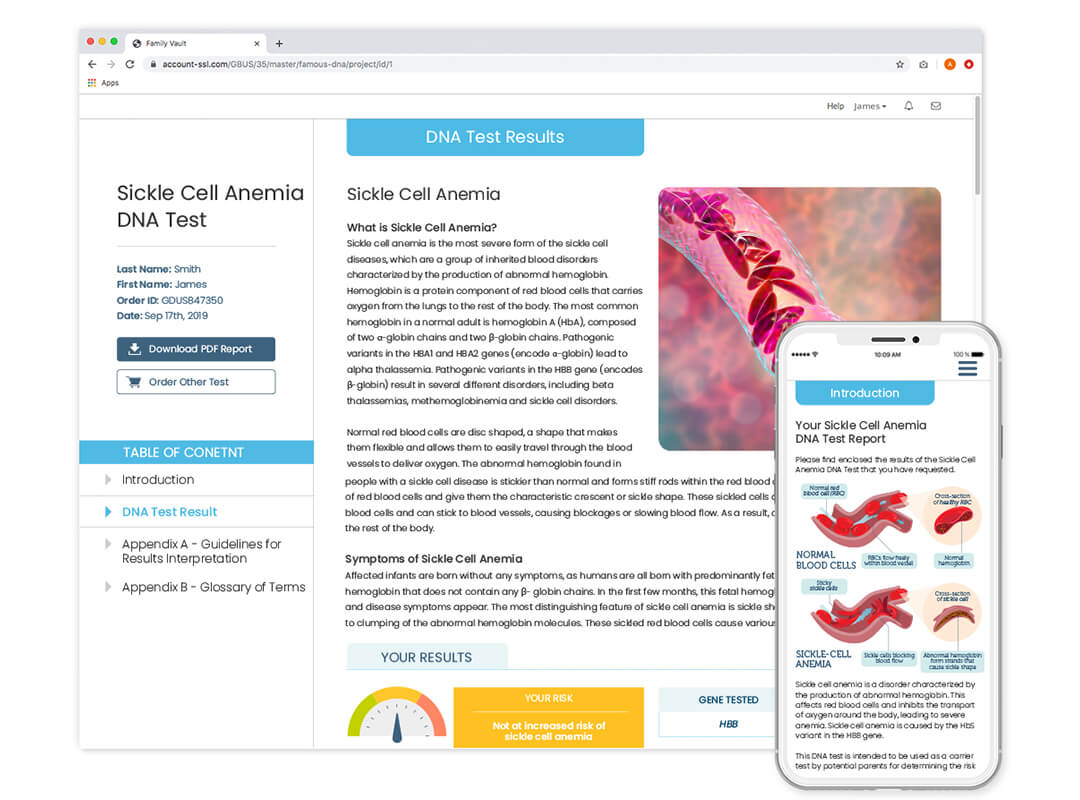Sickle Cell Anemia DNA Test
Are you a genetic carrier for sickle cell anemia? Find out with this DNA Test.
- Detects the HbS variant which causes sickle cell anemia
- Characterized by the production of abnormal hemoglobin and sickle-shaped red blood cells
- 100% private and confidential online results
Already have DNA markers? Sign in and upload your data to view results.
Need to take the DNA Test? Order our easy-to-use swab kit.





